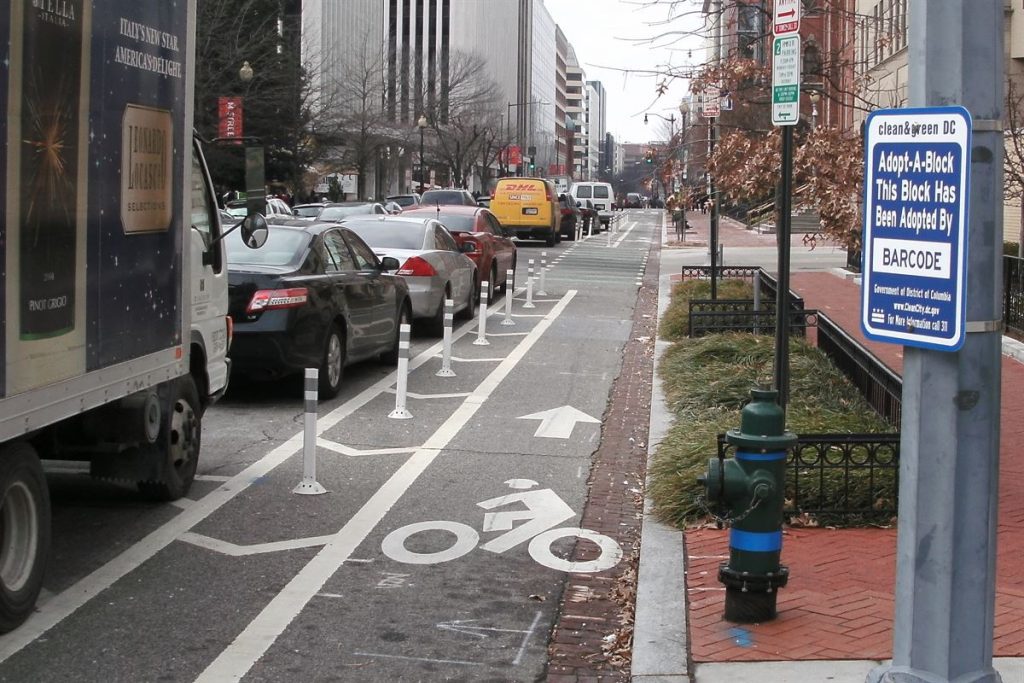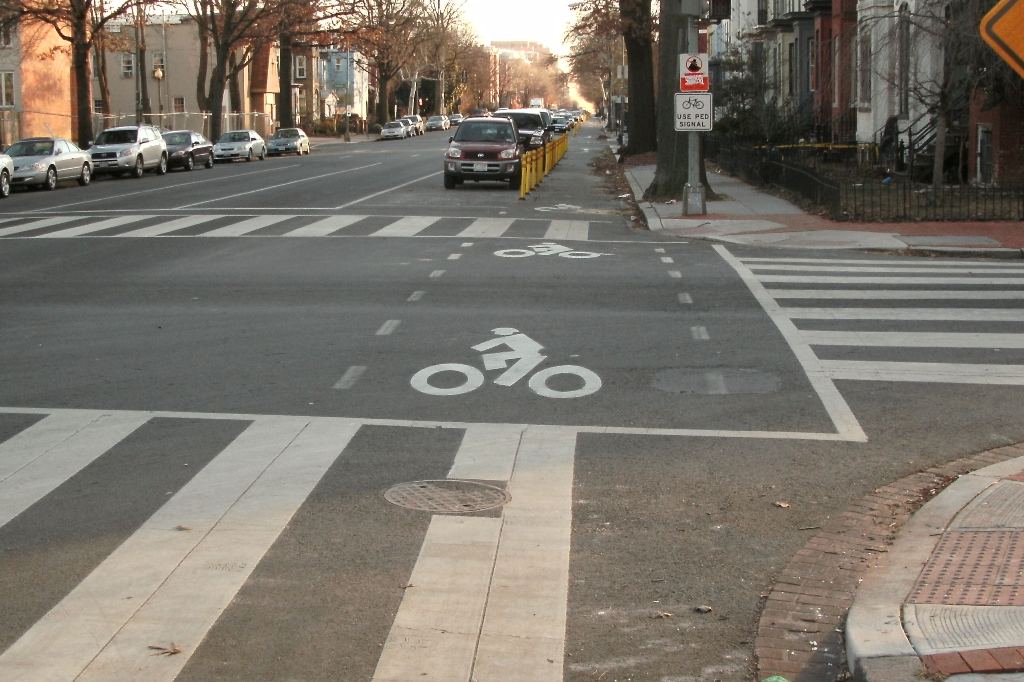Back at my old university job, about this time of year I was often making the pilgrimage to the winter of Washington DC for a big annual transportation conference there. Remarkable to think that my last visit there was 5 years ago and, thanks to Covid (and no handy travel budget any more…), I don’t plan on going near there any time soon (although it is happening in-person this year, many people have had to “phone it in” to the many presentations and meetings). As well as catching up on the latest cycling research every visit, over time it was also interesting to see how the city itself was getting better at providing for cycling. This blog post (originally from Jan 2015) shows some of the interesting developments that had appeared by that time. Similar things have since appeared around Chch too (e.g. public bikeshare) but I also wonder whether we missed a trick in not repeating more of the “paint and posts” approach that DC did…
Greetings from the chilly US! The reason for the gap since my last post is because I’ve been in Washington DC for the Transportation Research Board’s Annual Meeting. You may recall from my last visit here that this is a huuuuge conference on all matters transport, with over 12,000 people in attendance to hear/view over 5000 papers and also attend a lot of meetings about research. Just looking at papers with “bike”, “bicycle” or “cyclist” in the title yields over 150 papers alone…
Whilst in DC, I also took the opportunity to have a good look around some of the recent street works downtown for cycling (I should mention that I did this while it was ~1 deg; the things I do for you, dear reader…). In the past few years, Washington has made some major strides forwards in terms of developing a more bike-friendly city (reputedly 5th best in the US now); this includes a number of innovative bike facilities, as well as a public bike-share scheme.
Probably the thing I was most impressed about compared to my previous visits was simply the number of people biking (and also the number of bikes parked around the place). Considering we were in the depths of winter there, it was great to see a fairly steady stream of people biking around the streets (of course, most of them conveniently showed just after I had taken a photo…); no doubt the numbers are even more impressive during summer. Washington DC’s bike commuting numbers were at 4.5% in 2013; that has doubled since 2009.
A lot of the credit for the increased cycling rates in DC has been attributed to the development of a number of separated bikeways around town. There are a variety of different styles that have been tried out, including:
- A two-way cycle track along a one-way street corridor
- A pair of one-way streets with adjacent separated cycleways (rather like what we’re getting for Tuam / St Asaph)
- A “contra-flow” separated cycleway behind parking against the one-way street direction
- A two-way bikeway down the middle of a multi-lane road
They certainly have their challenges, not least of which is how to treat them at intersections (particularly if you are facing against traffic). I only noticed one site that had its own cycle signal phase; typically signs indicated that you were expected to either heed the general traffic signals or parallel pedestrian crosswalk signals.
Where there was turning traffic, there was often a special “mixing zone” ahead of the signals where bikes and cars swapped places.
At minor side-roads and driveways, additional colour and signage helped to highlight the potential crossing conflict to entering/exiting traffic.
Separators were largely just standard flexi-posts, but I did notice a few low rubber kerbs (as per Ilam Rd) along the Pennsylvania Ave cycleway
From observations, all these treatments generally seemed to cause no major drama for all parties concerned. Personally I was more worried as a pedestrian – late red-light running by motorists was pretty endemic!
The maintenance of some markings and posts left a bit to be desired; I think that the harsh snow/frost action doesn’t do any favours there either. But generally they had the intended effect of providing a suitable separated facility (often along some pretty busy streets).
Next stop for me is New York, home of some more impressive cycling initiatives – stay tuned!
What do you think of Washington DC’s cycling efforts?


